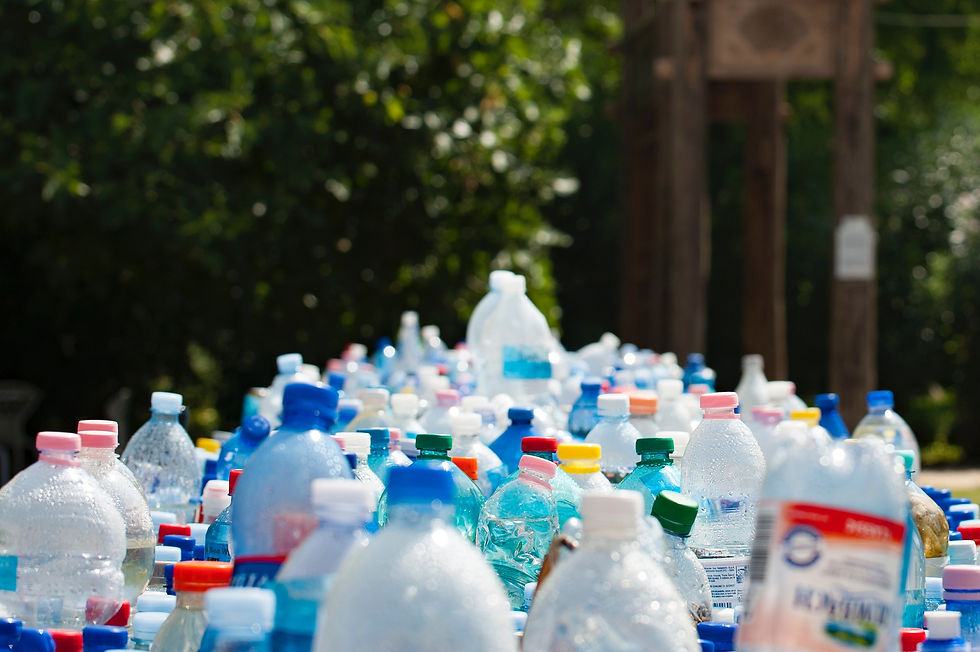Plastic Predicament: The Disposable Dilemma
- Amelie Nicholson
- Jul 25, 2023
- 3 min read
It’s the last straw for the environment, as single-use plastics have reached the breaking point.

Image by mali maeder | @pexels
As of 2018, plastic creates 12% of the world's waste. With the amount of waste increasing every year, the problem of plastic is only growing more and more apparent.
Goal 12 of the United Nations Sustainable Development Goals focuses on ensuring sustainable consumption and production patterns. Under this ambition, countless efforts have been made to decrease consumption and stop consumerism. However, there is an elephant in the room, and it’s made of plastic.
As of 2018, plastic creates 12% of the world's waste. Once combined with food, it contributes to more than half of global waste. With the amount of waste increasing every year, the problem of plastic is only growing more and more apparent.
Despite noticeable public scrutiny, and increasing efforts to reduce plastic use, plastic still remains a rampant issue plaguing the environment. In fact, its usage has only increased since the COVID pandemic, as plastics were heavily utilised for things such as masks and sanitiser bottles. Plastic is still being relied on entirely for things such as packaging, often excessively.
Plastic is reliable. It is durable, able to be shaped into many forms. But it is exactly that power that has caused the environmental apocalypse. Plastic manufactured decades ago, still exists today. Not enough plastic is being recycled. Rather, it gets used once and goes into the waste system.
Underwater Issues
“Industrial pollution and the discarding of plastic waste must be tackled for the sake of all life in the ocean.” Sir David Attenborough
Plastic isn’t only an issue for people, as animals have started to feel the brunt of it for a while now. Marine animals in particular, although mammals have not had an easy time of it either. A significant amount of plastic ends up in the ocean, due to people throwing away litter on beaches. Most plastics sink to the bottom of the ocean, polluting its waters. Other plastics encounter animals.
Animals have ingested these plastics, polluting their bodies with chemicals, and disrupting the natural balance of nature. Countless animals deaths have died because of eating plastic. The animals can mistake the plastic for food, and attempt to consume it. In addition to this, it has trapped wildlife, creating wounds or starving them. Plastic fishing nets in particular, tend to strangle marine life.
These plastics threaten to collapse the marine food chain itself, disrupting millions of organisms in the ocean. When plastic decomposes in the ocean, it releases harmful chemicals and absorbs pollutants, which may then be ingested by marine life, creating a hazard in the food chain. If a small fish eats some plastic and the chemicals will increase. Then that plastic will be consumed by the bigger fish that eats the smaller fish, and so on. A catastrophic cycle is created, known as biomagnification.
Next Steps
The prospect of tackling such a huge problem can be intense, but there are small steps you can take that help in a meaningful way.
For example, it is essential to continue raising pressure on companies to hold them accountable for their plastic usage. Support businesses that are fulfilling the SDGs, ignoring those that don’t.
The ocean has to stop being the dumping ground for waste. It has served as such for centuries now and efforts to clean will take just as long, if not more. Marine life is suffering, becoming trapped and tortured through the material of plastic itself as well as the chemicals plastic creates. The best way to ensure this is through spreading the word. Ensure people know of the strife marine life is under.
We must rethink our packaging, switching to eco-friendly options such as paper bags whenever possible. Ideally, any plastic used could be converted into something else, stopping it from becoming waste and polluting our Earth. For any plastic actively in circulation, figuring out and utilising ways to recycle that plastic is fundamental. Make sure to follow local guidelines on how to properly recycle your trash in the right places. Reusable materials are the way of the future, as continuing to rely on plastic will create a world of trash.
There may be local events to encourage trash clean up, or it could be possible to get together and organise one yourself with friends or a charity. Spending a day cleaning your nearest park empty of trash, or putting away waste left on a beach can mean so much to the environment.
It is through the actions of ourselves and others that we can save the earth, and it is time we try.



Comments